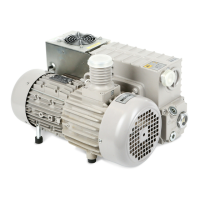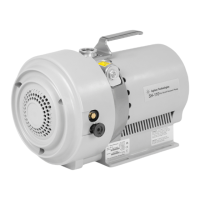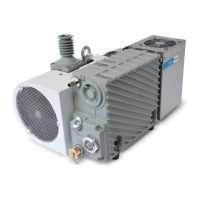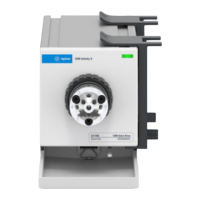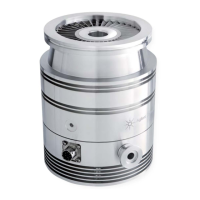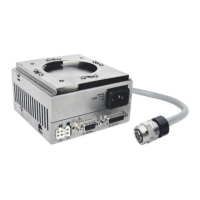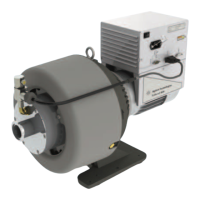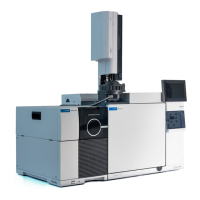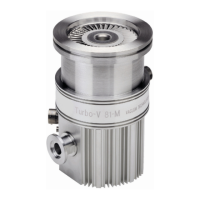Technical Description
Stopping the Pump
5
Dual Stage Rotary Vane Pumps User Manual/ 87-900-937-01(L) 75/140
If the pump is sucking in environments with liquids or vapors, it is
important to leave it to run with the gas ballast open so as to avoid
condensation of the vapors and contamination of the lubricating oil
as a result. When there is no danger of the oil being contaminated,
the gas ballast valve should be closed to reduce the pump’s power
absorption.
The gas ballast valve will prove useful in the cold season when, due
to the lower room temperatures, it takes longer for the pump to reach
rated temperature when switched on. Compression of the air forced
in by the gas ballast valve develops heat, which in turn increases
temperature of the oil faster.
NOTE
If gases without vapors are sucked in, you are advised to open the gas ballast
device from time to time in order to eliminate the traces of humidity they
contain.
NOTE
For repetitive work cycles, with brief time intervals in between, it is better not to
stop the pump.
Stopping the Pump
There are no special procedures for switching the pump off; it needs
only to be disconnected from the electric power by means of the
bipolar switch (version with single-phase motor - see section
MODELS WITH SINGLE-PHASE UNIVERSAL MOTORS) or of the
multipolar switch (version with three-phase motor - see section
MODELS WITH THREE-PHASE UNIVERSAL MOTORS).
When the pump is stopped, the anti-suckback device makes it
possible to maintain vacuum in the vessel connected on the inlet
flange of the pump.
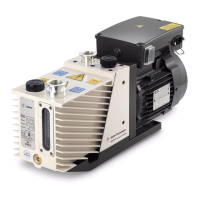
